Explore web search results related to this domain and discover relevant information.

The idea of “red states” and “blue states” may feel deeply embedded in the symbolism of US politics, but before 2000 the colors were often the other way around.
The idea that Republicans are red and Democrats are blue may, today, feel embedded in the symbolism, branding and vernacular — think “blue” states and “red” states — of US politics. But the current configuration has only been cemented in the public imagination since the 2000 US presidential race between George W.Like the blood of workers rising against their oppressors, red features on the flags, logos and ensigns of left-leaning political organizations, from radical communists (think “Red China”) to the social democratic parties of Western Europe, Canada and Australia.As such, some of the earliest electoral maps, like Scribner’s 1883 Statistical Atlas of the United States, used a red-for-Democrat, blue-for-Republican scheme that would have been familiar to political observers outside the US.According to Washington Post research into newspapers, magazines and TV news transcripts since 1980, the first recorded use of the term “red state” in the media occurred on an NBC “Today Show” segment that aired a week before voters headed to the polls in 2000. But it was in the election’s aftermath that “red states” and “blue states” became so widely discussed that they entered common parlance. Related article How Britain’s political parties got their colors
In American political discourse, states are often labeled “red” for leaning towards Republican politics or “blue” for leaning Democratic.
In the last ten elections, 41 states voted for the same party eight times or more.State political profiles are shaped by a host of factors — voting patterns in national elections, the party affiliations of governors and congresspeople, and state laws.Most states vote and act consistently along party lines, but some have less predictable political leanings.The politics of the representatives states send to Congress also affect the states’ political reputations.
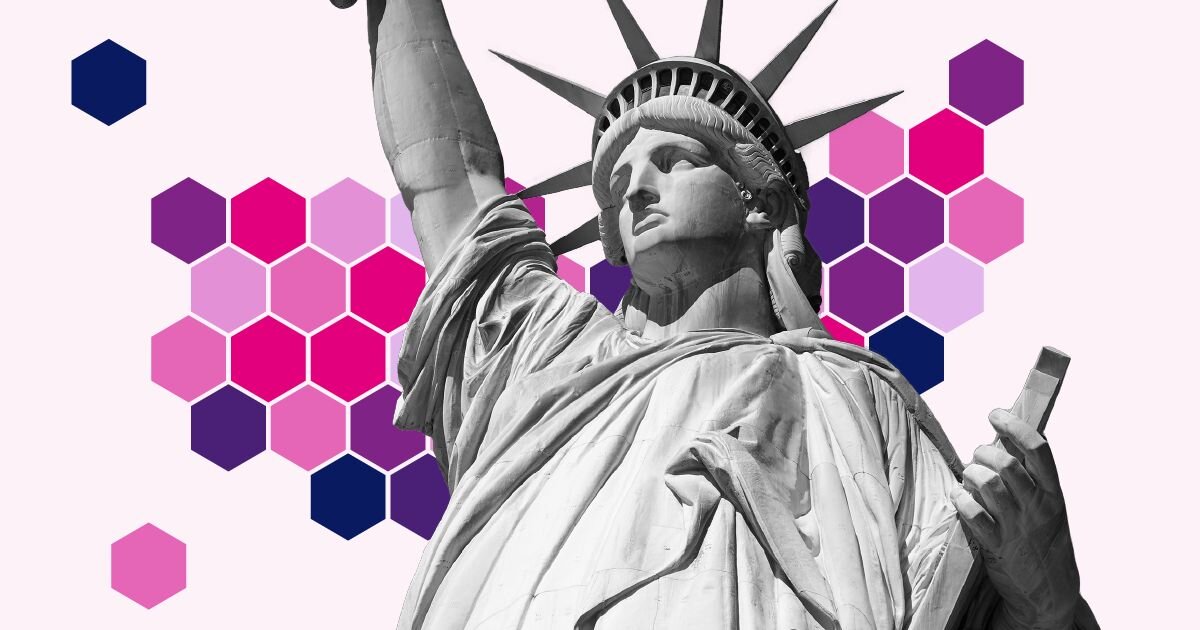
That’s why, in most states, law ... most red flag petitions. Police in Minnesota have rapidly stepped up the use of the law in the last six months. There were 11 petitions filed in all of 2024 in St. Paul, Minnesota, for example, compared with 20 so far in 2025. ... Rep. Emma Greenman, who represents the district that is home to Annunciation Church, speaks as she joins activists and fellow politicians in calling ...
That’s why, in most states, law enforcement initiates most red flag petitions. Police in Minnesota have rapidly stepped up the use of the law in the last six months. There were 11 petitions filed in all of 2024 in St. Paul, Minnesota, for example, compared with 20 so far in 2025. ... Rep. Emma Greenman, who represents the district that is home to Annunciation Church, speaks as she joins activists and fellow politicians in calling for an assault weapons ban during a press conference at Minneapolis City Hall, Aug.Minnesotans like Representative Greenman don’t think red flag laws are enough. Gov. Tim Walz has vowed to call the Legislature into special session to consider banning the kind of military-grade rifle used in the assault at Annunciation Church. But as such measures face political hurdles, red flag laws continue to evolve.Read this article in https://www.csmonitor.com/USA/Politics/2025/0905/minnesota-church-shooting-red-flagPolice say no one raised alarms before a shooter opened fire on a Minnesota church. The state’s red flag law could have been used to prevent the attack.

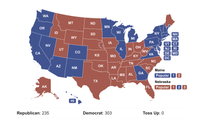
A "red state" is one whose voters elect primarily Republican candidates.
Despite traditionally being a red state, the shifting demographics and recent political movements have started to challenge the longstanding conservative dominance in the region.If a Republican candidate wins the vote in that state, that state has ‘turned red.’ If a state votes for a Republican in nearly every statewide race, it could be considered a ‘deep red’ or ‘dark red’ state (Alabama, Texas, Idaho, etc.).A “red state” is one whose voters elect primarily Republican candidates.There are different levels of how ‘red’ a state can be.
The colors red and blue are also featured on the United States flag. Traditional political mapmakers, at least throughout the 20th century, had used blue to represent the modern-day Republicans, as well as the earlier Federalist Party. This may have been a holdover from the Civil War, during ...
The colors red and blue are also featured on the United States flag. Traditional political mapmakers, at least throughout the 20th century, had used blue to represent the modern-day Republicans, as well as the earlier Federalist Party. This may have been a holdover from the Civil War, during which the predominantly Republican north was considered "blue".That same year, a color supplement included with a July issue of The Washington Post used red for Republican-favoring states, blue for Democratic-favoring states, yellow for "doubtful" states and green for territories that did not have a presidential vote. The 21st-century association of colors in American politics is contrary to the long-standing conventions of political color in most other countries whereby red symbols (such as the red flag or red star) are associated with leftist politics including countries with such governments, such as Red China, whereas blue is associated with conservatism.The demographic and political applications of the terms have resulted in a temptation to presume this arbitrary classification is a definite and fundamental cultural division. Given the general nature and common perception of the two parties, "red state" implies a conservative region or a more conservative American, and "blue state" implies a more liberal region or a more liberal American.The analysis that suggests political, cultural and demographic differences between the states is more accurate when applied to smaller geographical areas. Traditionally, the practice of designating a U.S. state as red or blue is based on the first-past-the-post winner-take-all system employed for presidential elections by 48 of the 50 U.S.It attempts to represent the margin of victory in each county by coloring each with a shade between true blue and true red. Due to the general absence of overwhelming victories, this technique results in mostly shades of purple. After the 2004 election, Vanderbei and then others made similar maps summarizing the results. Quickly thereafter, the term Purple America entered the public lexicon as a way of stating that the United States is not as divided as the political pundits would have the people believe.

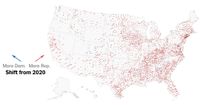
Politics|Election Results Show a Red Shift Across the U.S.
A vast majority of counties shifted in favor of former President Donald J. Trump in the 2024 presidential election.Gerrymandered Map in Texas: After a bruising political fight, Gov.https://www.nytimes.com/interactive/2024/11/06/us/politics/presidential-election-2024-red-shift.html

Jack Francis[2] (born: May 11, 2000 (2000-05-11) [age 25]), known online as Red Eagle Politics, is an American right-wing[3] election prediction and analysis YouTuber who started uploading in January of 2019 that is focused mostly on American federal elections, but some state elections are ...
Jack Francis[2] (born: May 11, 2000 (2000-05-11) [age 25]), known online as Red Eagle Politics, is an American right-wing[3] election prediction and analysis YouTuber who started uploading in January of 2019 that is focused mostly on American federal elections, but some state elections are covered as well.Red Eagle Politics's YouTube channel was terminated on July 29, 2022.Sometimes he is called “REP”, as it stands for Red Eagle Politics.Some Let's Talk Elections commenters use laughing emojis when describing Red Eagle Politics's predictions.[10]
States voting consistently for the Democrat or Republican party in presidential election since at least 2000

The Democratic candidate for governor is about halfway through his 100-town hall tour, making his pitch to voters 14 months before Election Day.
Rob Sand hits the road early: Hear the message he's delivering in red-state Iowa · The Democratic candidate for governor is about halfway through his 100-town hall tour, making his pitch to voters 14 months before Election Day. STATE ON HIS 100 TOWN HALL TOUR. WE WANTED TO KNOW WHO’S SHOWING UP TO THESE EVENTS MORE THAN A YEAR BEFORE THE ELECTION, AND WHAT THEY THINK OF SAND’S MESSAGE, KCCI CHIEF POLITICAL REPORTER AMANDA ROOKER FOLLOWED SAND AS HE VISITED FIVE COUNTIES IN A SINGLE DAY.Chief Political Reporter · Advertisement · Rob Sand hits the road early: Hear the message he's delivering in red-state Iowa · The Democratic candidate for governor is about halfway through his 100-town hall tour, making his pitch to voters 14 months before Election Day.THANK YOU FOR BEING HERE. SAND SAYS HE MEASURES HIS TOWN HALLS BY THE HANDS THAT GO UP, SOMETIMES 3 OR 4, SOMETIMES A DOZEN. THAT’S A GREAT MEASURE OF SUCCESS, BECAUSE THOSE ARE A LOT OF PEOPLE WHO TYPICALLY WOULDN’T FEEL WELCOME GOING TO A POLITICAL EVENT.IT’S ALL PART OF HIS MISSION TO PRESENT VOTERS WITH SOMETHING DIFFERENT. ON TUESDAY, HE SWUNG THROUGH FIVE DIFFERENT COUNTIES. VOTERS ACROSS THE POLITICAL SPECTRUM SAY HIS MESSAGE RESONATES. HE’S THINKING OUTSIDE THE BOX. I THINK HE HAS A NEW MESSAGE, A MORE INCLUSIVE MESSAGE.

Enjoy the videos and music you love, upload original content, and share it all with friends, family, and the world on YouTube.
As an example the colour red symbolises left-wing ideologies in many countries (leading to such terms as "Red Army" and "Red Scare"), while the colour blue is often used for conservatism, the colour yellow is most commonly associated with liberalism and right-libertarianism, and Green politics ...
Politicians making public appearances will often identify themselves by wearing rosettes, flowers, ties or ribbons in the colour of their political party. Parties in different countries with similar ideologies sometimes use similar colours. As an example the colour red symbolises left-wing ideologies in many countries (leading to such terms as "Red Army" and "Red Scare"), while the colour blue is often used for conservatism, the colour yellow is most commonly associated with liberalism and right-libertarianism, and Green politics is named after the ideology's political colour.The political associations of a given colour vary from country to country, and there are exceptions to the general trends, for example red has historically been associated with Christianity, but over time gained association with leftist politics, while the United States differs from other countries in that conservatism is associated with red and liberalism with blue.In 2017, the ÖVP changed their official colour from black to turquoise, with some regional branches switching to turquoise as well, while others continue to use black, often in a mix with another colour, such as red, yellow, green or blue. In Italy, black is the colour of fascism because it was the official colour of the National Fascist Party. As a result, modern Italian parties would not use black as their political colour; however, it has been customary to use black to identify the neo-fascist Italian Social Movement.In Italy, Northern secessionist movements such as Lega Nord chose green as their political colour, advocating their Celtic origin. In Japan, the dominant Liberal Democratic Party (LDP) uses green as one of its official colours. Although the party has used the colour red more prominently in recent years.In the United States, it is used by the Green Party, which promotes green politics, specifically things like environmentalism. Magenta is a colour that started being used in the 21st century to replace yellow for some liberal and centrist parties and organisations in Europe. It is not to be confused with the socialist or social democratic use of the colour pink. In Germany although the official colour of the left-wing party Die Linke is red, mass media uses magenta as the party colour to prevent confusion with the centre-left Social Democratic Party whose party colour is also red.
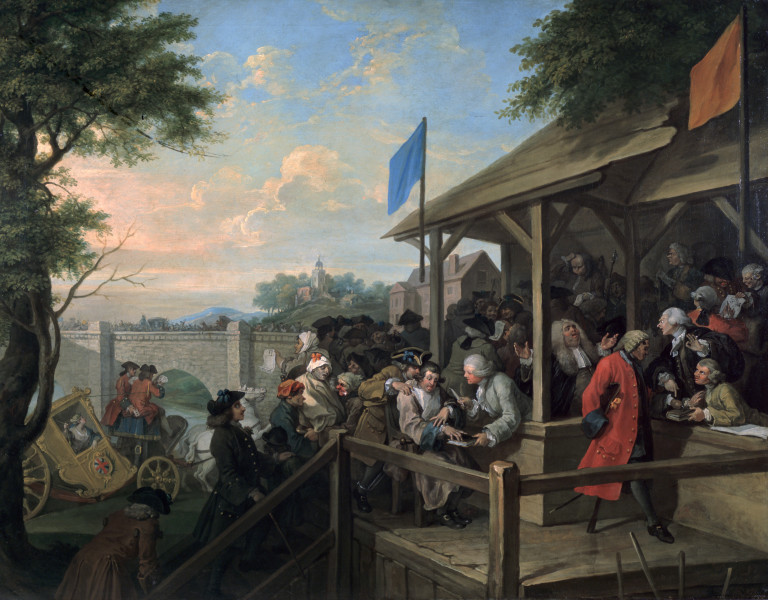
Red alert in Thai politics! The People’s Party is set to announce on Wednesday who it will back for Prime Minister in a high-stakes showdown between Chaikasem Nitisiri and Anutin Charnvirakul, as Pheu Thai faces legal uncertainty and rising political pressure.
Red alert in Thai politics! The People’s Party is set to announce on Wednesday who it will back for Prime Minister in a high-stakes showdown… Read More ›Pheu Thai and the People’s Party to talk about an Orange Red alliance to elect Chaikasem Nitisiri as PM · Pheu Thai rattled by PM’s ouster. Risks complacently assuming the Premiership of Chaikasem Nitisiri · Anutin plays his hand for the Premiership, but only one thing is sure. Thailand is in a political crisisPheu Thai and the People’s Party to talk about an Orange Red alliance to elect Chaikasem Nitisiri as PM August 31, 2025 · American teacher arrested in Suphan Buri for sexual abuse of a 13-year-old girl, a pupil in his class August 30, 2025 · Anutin plays his hand for the Premiership, but only one thing is sure. Thailand is in a political crisis August 30, 2025Wednesday is shaping up to be a decisive day in Thai politics, as the People’s Party prepares to announce at 9:30 a.m. who it will back for Prime Minister in the high-stakes showdown between Bhumjaithai leader Anutin Charnvirakul and Pheu Thai’s Chaikasem Nitisiri.


President Donald Trump won the Hawkeye State by double digits in 2024.
Rob Sand, Iowa's state auditor, is among the Democrats seeking to seize a seat in the red state next year.Locked out of power throughout the country, Democrats see ruby-red Iowa as one of their best shots at mounting a conservative state comeback in the upcoming midterms.3 points from defeating a House Republican in a deep-red district in 2018.

Red alert in Thai politics! The People’s Party is set to announce on Wednesday who it will back for Prime Minister in a high-stakes showdown between Chaikasem Nitisiri and Anutin Charnvirakul, as Pheu Thai faces legal uncertainty and rising political pressure.
Red alert in Thai politics! The People’s Party is set to announce on Wednesday who it will back for Prime Minister in a high-stakes showdown… Read More ›Pheu Thai and the People’s Party to talk about an Orange Red alliance to elect Chaikasem Nitisiri as PM · Pheu Thai rattled by PM’s ouster. Risks complacently assuming the Premiership of Chaikasem Nitisiri · Anutin plays his hand for the Premiership, but only one thing is sure. Thailand is in a political crisisPheu Thai and the People’s Party to talk about an Orange Red alliance to elect Chaikasem Nitisiri as PM August 31, 2025 · American teacher arrested in Suphan Buri for sexual abuse of a 13-year-old girl, a pupil in his class August 30, 2025 · Anutin plays his hand for the Premiership, but only one thing is sure. Thailand is in a political crisis August 30, 2025Wednesday is shaping up to be a decisive day in Thai politics, as the People’s Party prepares to announce at 9:30 a.m. who it will back for Prime Minister in the high-stakes showdown between Bhumjaithai leader Anutin Charnvirakul and Pheu Thai’s Chaikasem Nitisiri.
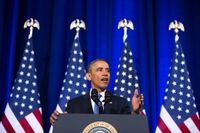
A “red herring” is an argument or piece of information that distracts from a different and more important issue. In some cases, political operatives may …
A “red herring” is an argument or piece of information that distracts from a different and more important issue. In some cases, political operatives may deliberately plant red herrings to turn the public away from an embarrassing issue.At other times, the red herrings simply appear on their own. The term likely originates from an article published in 1807 by journalist William Cobbett in the Weekly Political Register.In a critique of the English newspapers, which had mistakenly reported Napoleon’s defeat, Cobbett recounted that he had once used a red herring to deflect hounds in pursuit of a hare. But he noted “It was a mere transitory effect of the political red-herring; for, on the Saturday, the scent became as cold as a stone.”During the debate, the candidate employed a red herring by suddenly discussing tax cuts when questioned about their stance on social issues, effectively sidestepping a potentially damaging line of inquiry. Political analysts pointed out that the sudden push for voter ID laws seemed to be a red herring, designed to shift public discourse away from larger issues of electoral reform and gerrymandering.
Assessing where the red/blue political line lies in swing states and how it is shifting Democratic-leaning urban areas in states that otherwise lean Republican is an increasingly important phenomenon in American politics, one that will help shape elections and policy for decades to come.
Democratic-leaning urban areas in states that otherwise lean Republican is an increasingly important phenomenon in American politics, one that will help shape elections and policy for decades to come. Blue Metros, Red States explores this phenomenon by analyzing demographic trends, voting patterns, economic data, and social characteristics of twenty-seven major metropolitan areas in thirteen swing states that will ultimately decide who is elected president and the party that controls each chamber of Congress.More distant suburbs that feature mainly large-lot, single-family detached houses and lack mass transit often vote for Republicans. The book locates the red/blue dividing line and assesses the electoral state of play in every swing state. This red/blue political line is rapidly shifting, however, as suburbs urbanize and grow more demographically diverse.Blue Metros, Red States is especially timely as the 2020 elections draw near. “The battle for the political allegiance of the growing and thriving metropolitan areas of the Sunbelt will be one of the central stories of American politics in the 2020s. This comprehensive and insightful work offers the definitive field guide to the electoral battlefield that may tilt the competition between red and blue America for years to come.Anyone who wants to understand where U.S. politics is heading next should start here.” —Ron Brownstein, senior editor at The Atlantic and a senior political analyst for CNN · “Blue Metros, Red States is a fresh look at a debate over demographics that had largely stagnated over the course of the past decade.

Republicans are redDemocrats are blueAre Americans desperateTo choose between the two?Subscribe: http://trt.world/subscribeLivestream: http://trt.world/ytliv
Republicans are redDemocrats are blueAre Americans desperateTo choose between the two?Subscribe: http://trt.world/subscribeLivestream: http://trt.world/ytliv...


America is famous for its so-called red states and blue states—territories in which a majority of residents reliably vote Republican or Democrat, respectively, during elections. But does the political partisanship go deeper than that? Research by Boston University political scientist Jacob ...
America is famous for its so-called red states and blue states—territories in which a majority of residents reliably vote Republican or Democrat, respectively, during elections. But does the political partisanship go deeper than that? Research by Boston University political scientist Jacob Brown shows that there are even red and blue neighborhoods—and that the section of town you live in might influence how you vote.“The idea is that there’s this exposure effect during childhood—that your place is influencing who you become politically,” Brown says. The next research frontier for Brown is to investigate if this partisan entrenchment creates greater hostility toward the other side. Does someone who grew up in a deep red neighborhood feel more animosity toward Democrats than someone who came from a purple community?“There’s a good amount of research in political science that many different areas of politics become more imbalanced when we have a geographically segregated electorate,” Brown says. “It makes it harder to draw districts in a way that ensures fair representation. It reduces electoral competition, and can contribute to polarization in Congress.“As much conflict as you see in politics now, I’m generally much more interested in the potential for cross-partisan exposure. There seem to be benefits from more mixed places and more shared geographic interests, and that’s something I see as positive, for sure,” he says. ... You’ve Heard of Red States and Blue States.

This past weekend’s nationwide “No Kings” protests were the strongest signal yet that many Americans are concerned about their government drifting toward authoritarianism under President Donald Trump.
But all of that came out during the 2024 campaign, when the comments could have been dismissed as overheated political rhetoric meant to prevent Trump from regaining office. Today, Murkowski is speaking after Trump has taken bona fide action to consolidate power on a number of fronts.

Red meat is a term used in politics to refer to statements or policies that are designed to appeal to a political party's base.
Things that get crowds riled up and angry — such as Donald Trump’s “Lock Her Up” chants during the 2016 presidential election — are good examples of red meat. The phrase was first seen in 1911 in the movie industry, describing movies that were sensationalized. It shifted into a political term in the 1940s.However, red meat can also be controversial and divisive, as it often involves stoking fear or resentment among voters. This can lead to negative consequences, such as increasing polarization and worsening political discourse.It can be seen as a way for politicians to appeal to the more extreme elements of their party, rather than trying to build consensus or find common ground with opponents. Red meat is often used by politicians in the form of speeches or campaign ads, where they can use strong language and rhetoric to stir up emotions among supporters.What does the cattle industry think of the term in a political context? Dan Murphy, a former vice president of the American Meat Institute and frequent media commentator on agriculture-related subjects, raised the question in a 2012 commentary and concluded: “As P. T. Barnum supposedly said, ‘There’s no such thing as bad publicity.’ And as long as ‘red meat’ stands for some-thing powerful, substantive and well, meaty, that ain’t bad.”







